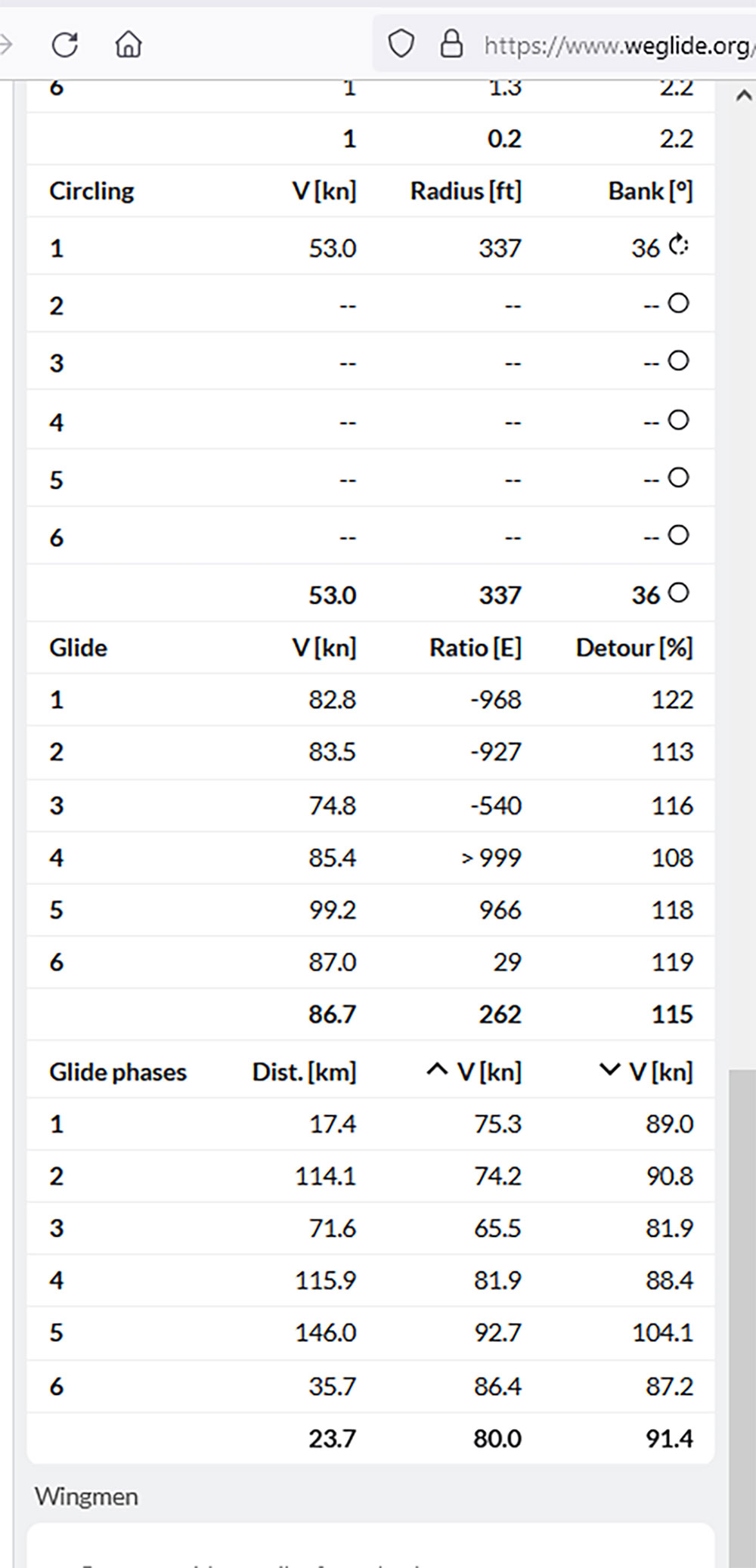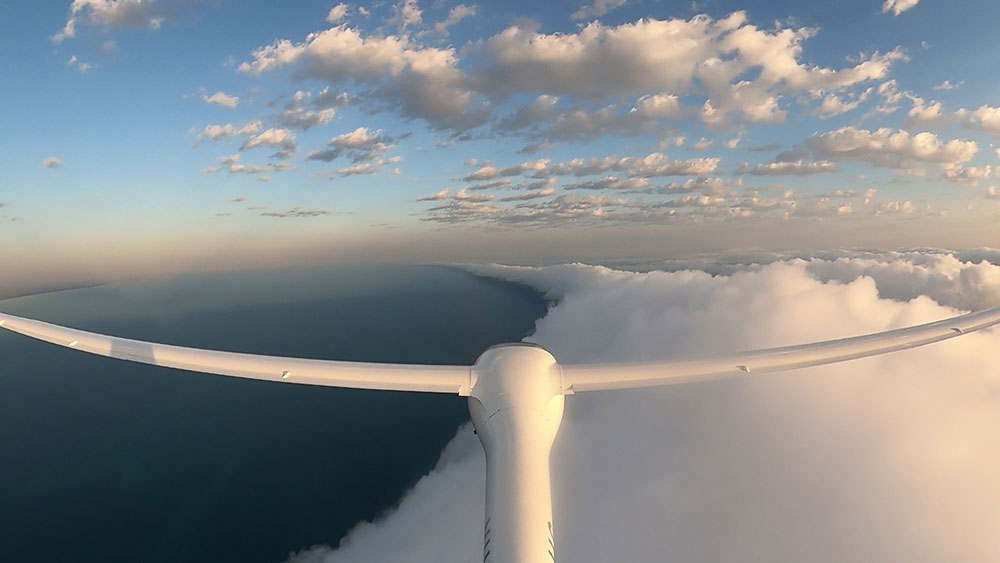There you are, you poor fool, a little wiser than before, with your glider license in your pocket. As a greenhorn, you are about to make a decision: Do you want to practice gliding as a hobby? Do you simply want share a few circles with the crows near the airfield on weekend afternoons, or otherwise sit in the sun with many others and enjoy the community? Then there is no need to learn more.

By Chris Hostettler
Or do you also want to practice gliding as a sport in addition to hobby flying? Do you want to fly far away, into the mountains, climb thousands of meters high in wave and to compete in a world gliding championship one day? In this case you need to expand your skills and knowledge and find coaching pilots who are willing to teach you in theory and practice. You will also need to study yourself, and above all fly a lot.
The Beauty and the Challenge
I decided on the latter pathway and got hooked on the beauty and challenges of flying gliders cross country more than 50 years ago when I had just turned eighteen. I applied to free Swiss military pilot pre-selection courses, much to the discomfort of my parents, but they knew that opposition would be useless.
Fortunately, Cumulus Gliding Club at Amlikon gliding strip held two week courses and encouraged cross country and competition flying, among others. Also helping on the ground at competitions and assessing turn-point photos all night, teaches you a lot. I got hooked.
Meantime – after having flown many European central and decentralised competitions in flatlands and mountains, first with camera and barographs, later with loggers introduced at the World Gliding Competition in Omarama 1995, and flying at the WGC in St. Auban France 1997 - I moved to Australia.
Here I loved competitions with distributed start points – I hate gaggle flying – but that idea got overturned and we have more gaggles again. I decided to avoid area tasks requiring investment in new instruments, and to not fly competitions and to soar just for fun. I don’t regret the decision.
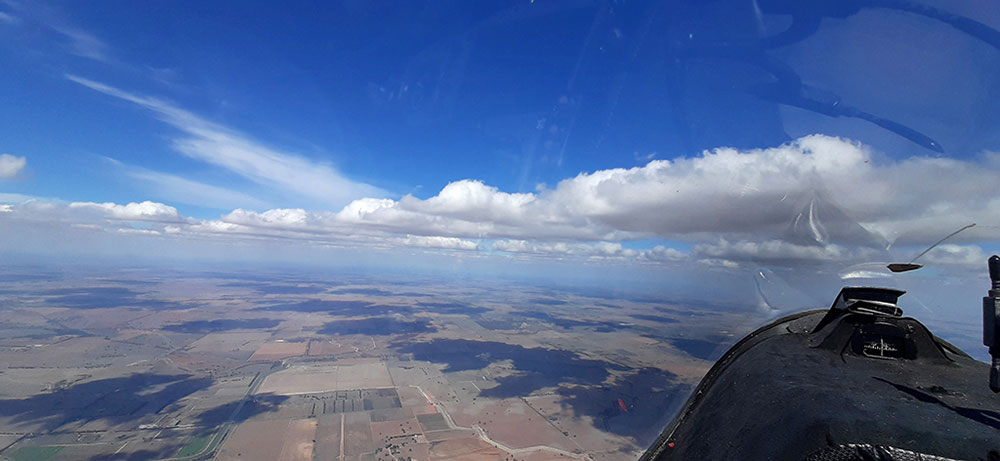
Faster Faster
The mantra that you have to try to fly faster and faster does not maximise the joy of flying.
Why is no one teaching cross country flying in a way to maximise gliding fun, to enjoy its beauty without increasing the risks? Flying comps is not for everyone. It requires more time off work, costs more (tows, travel, glider insurance), may stress relationships and the weather is not always favourable.
There are other beautiful and more satisfying aspects of gliding than maximising speed on tasks dictated by the competition director.
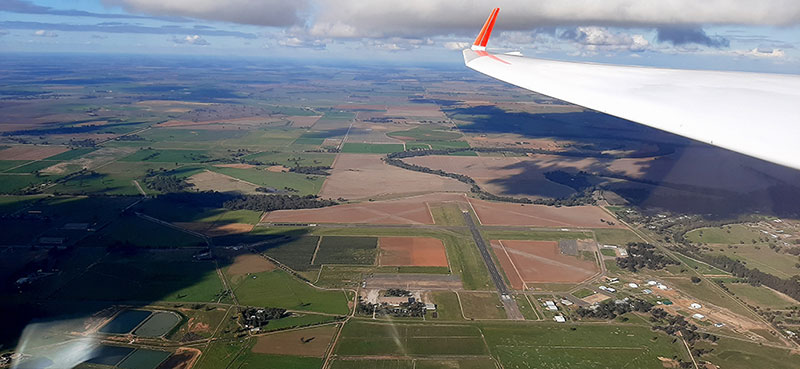
- You can prepare your own tasks based on the weather forecast – if you are lucky it will be
- You can skip the task if the weather looks different and maximise distance the easy way into another area.
- You can just fly for fun and forget it, or upload your flights to OLC or WeGlide, just using the sites as a logbook and to learn from statistics, or to compare yourself with others.
- Flying these decentralised competitions is much cheaper than flying comps.
- I love to participate, voluntarily sacrificing 10kph average speed to minimise outlanding risks by not gliding to below 2000ft.
- to set my arrival height to 1000ft and not zero
- to fly in higher altitude bands. It limits stress and maximises fun.
- to circle less, following bands of lift. Reichmann: Those who circle fly backwards half the time.
- and sometimes it’s faster flying slower.
But how?
Doesn’t the speed to fly theory tell you how fast to fly correctly? Not all the time. It’s just a theory based on idealised continuous assumptions (Paul MacCready, Helmut Reichmann) and later changed to a stochastic model (John Cochrane).
Helmut was still very much influenced by the saw-tooth flight style of the old days. Even if pure dolphin style becomes feasible, he still adhered to his thermal model idea, assuming the existence of strong centres along the cloud streets where circling makes sense, and he aligns his tactical speed to fly and MC values with it.
So, what happens when we abandon the fixed thermal assumption? The theory does not apply when flying along a ridge, like the Appalachian mountains in Pennsylvania – Tennessee. As Karl Striedieck told me at the Open Nationals in Hobbs 1980, “Just stay on ridge height, keep the vario on zero and do not watch the ASI or the wing tips.”
The theory could also not explain the high average speeds which Hans-Werner Grosse achieved on his long flights, ultimately the one from Lübeck to Biarritz in his ASW-12, where he flew slowly dangling along the cloud base, and avoided circling because the climbs were too weak to be used for circling. I found this idea tempting and stumbled over an article describing a flight style they call ‘Schwabbeln’ in Germany.
Dangling
The idea describes the following: If lift centres are weak relative to the rest of the line-up, it makes sense to risk flying far down to catch a thermal worth centring. Then it’s often better to lower MC and to continue flying higher along the base of the thermal line-up, like a withered leaf, and feeling the best way along the thermal line-up. Flying ahead with a significantly lower MacCready value than prescribed by Reichmann's dolphin style is what the Germans call ‘schwabbeln’. I translate it to dangling.
They say: Dangling is "applied dolphin theory", only under weak conditions and taking into account the risk of missing the next thermal. In my opinion it also applies if convection height is low or if the optimal height band is narrow. Read this article by John Cochrane
He suggests flying fast at altitude and slower the further you descend in the convection. Without risk - quick, with identifiable risk - slow. If you already see the risk at the base, it's time to fly slowly, ‘dangling along’ and stay high.
Dangling also omits centring time in weak lift or starting to turn in fake gust lift, when you feel gusts like a bang, while thermals increase pressure gradually. Your glider sinks less in straight flight than with 35° bank. This technique of flying forward is risk-minimal. Dangling also helps to stay on top - and that's almost always the dominant strategy.
I wondered what would happen if I applied the dangling strategy under cloud streets also under stronger conditions? I started to fly that way a few years ago. I have flown hundreds thousands of kilometres without out-landings in Australia. My friends often ask me how I achieve these high average glide ratios and low circling rates combined with long distances?
I confess – I’m in love with cloud streets. I am looking for them all the time:
- How do the shadows on the ground line up?
- How far do they go?
- How does their direction line up with the wind?
- How does their direction compare to the sun?
- How far is the distance to the next line-up if they end?
- Is the line-up continuous or are clouds interconnected with wisps?
- Where is the lift stronger and where weaker?
Roads in the Sky
I am painting imaginary roads of lift into the sky ahead, following them and modifying them based on the experienced situations. Most important is the display of live wind strength and direction in relation to your glide path. My ClearNav variometer does it nearly perfectly while flying along. Bruce Taylor showed me in 1999 how to use the wind direction to approach and leave thermals optimally, which works also in the blue – at least the leaving part.
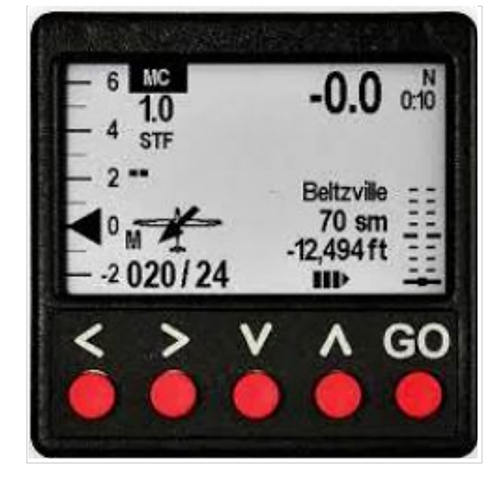
Dangling also works combined with stronger weather situations as long as you agree to compromise a bit of average speed. Flights and statistics confirm it.
As the 2024 season finished, the weather not having been very kind and only allowing me 26 flights, I’m happy with the achieved performances. It was only on the 16th of March that I nearly risked an out-landing because I pushed too much to fly a few kilometres more.
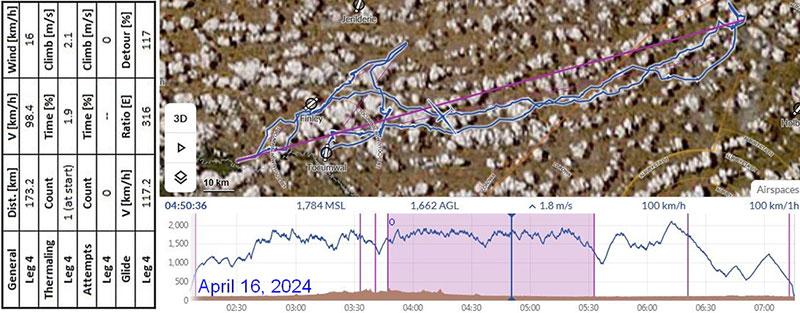
This season’s highlight was on 10 February. With 610km at 109kph 8.2% circling and an LD of 97 it stretched my ASW-27’s limit past Eta performance.
The longest distance without circling was on 16 April (see trace) on leg 4, 173km at 98kph LD=316 with a 16kph south-westerly headwind.

The WeGlide 2024 Tocumwal Soaring Centre local flight summary top six ranking until mid-April shows the average statistics.
Best LD for my 27 and the lowest circling time, but highest detours percentage. It doesn’t show though how many low points you had, just escaping an out-landing. One for me – I know my friends had more. Let’s hope for a better next season.
My highlight in Australia happened on 2 January 2016. It was a storm front with lightning along the 1,000ft lower black base than at the sunny western edge, moving from east to west. Having landed after the first tow due to early cirrus clouds I had no ballast. 500km with 130kph at LD=300, a sprint of 300km in 2h at LD= and not circling after the first climb, does not happen very often. I’m still waiting for a repeat of this weather opportunity.

